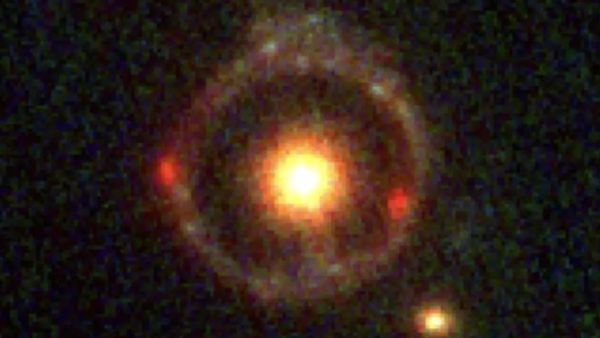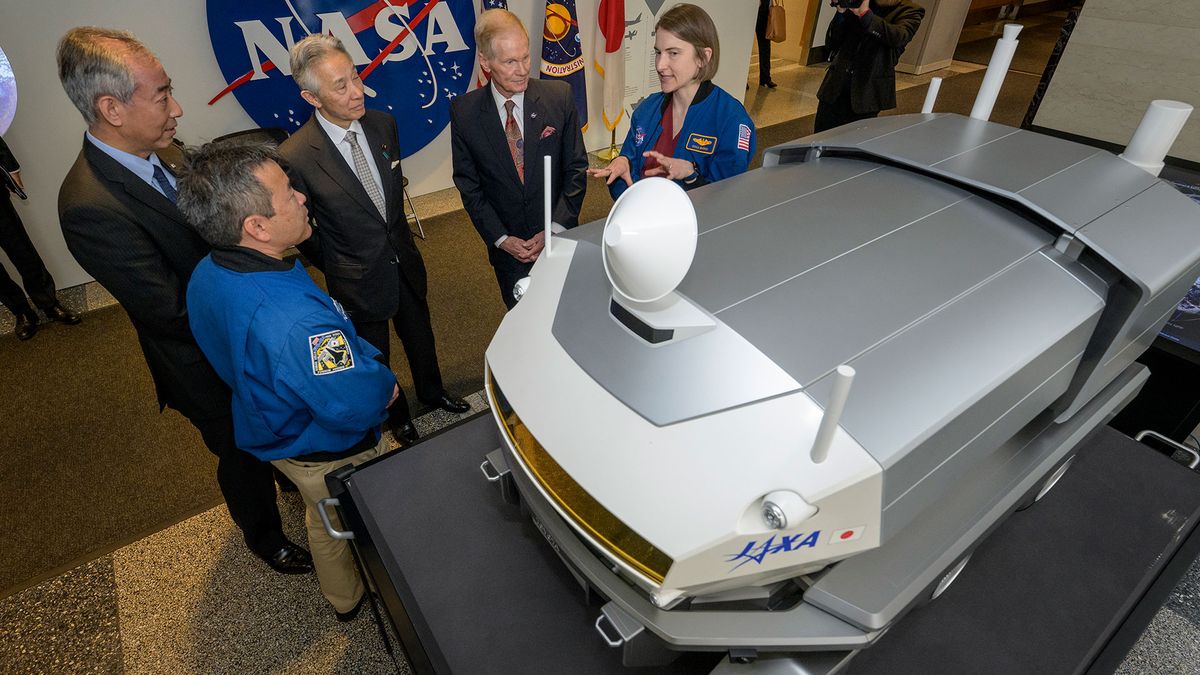Exploring the Mysteries of Dark Matter with JWST-ER1g
A recent in-depth analysis of a galaxy known as JWST-ER1 has provided fascinating insights into the nature of dark matter and its potential interactions. This extraordinary galaxy, which first appeared just 3.4 billion years after the Big Bang, has captured the attention of physicists due to its unique properties.
The Fascinating Discovery of JWST-ER1g
JWST-ER1g, located over 17 billion light-years away from Earth, holds the distinction of being the farthest-known example of an “Einstein ring.” This phenomenon occurs when light rays from a distant galaxy are bent around a central galaxy, creating a perfect circle of light. It was first observed last October through images captured by NASA’s James Webb Space Telescope (JWST).
While the cosmic mirage of the Einstein ring is undeniably stunning, it also serves as a valuable tool for physicists seeking to measure the mass contained within the ring’s radius. By analyzing the warping of space-time around JWST-ER1g, researchers estimated that this galaxy weighs an impressive 650 billion suns, making it an exceptionally dense galaxy given its size.
Unveiling the Secrets of Dark Matter
One of the most intriguing aspects of JWST-ER1g is its connection to dark matter, an elusive substance that has long perplexed scientists. Despite being invisible, dark matter is believed to constitute the majority of the universe’s mass. In the case of JWST-ER1g, dark matter appears to explain about half of the galaxy’s total mass, leaving physicists to ponder the source of the remaining unaccounted mass.
The discovery team’s findings, outlined in a recent publication, suggest that JWST-ER1g’s high density may be attributed to a greater abundance of stars than previously thought. Additionally, a proposed mechanism involving the collapse and condensation of ordinary matter into the galaxy’s dark matter halo could be responsible for the observed density.
Dark matter’s role as the gravitational glue that holds galaxies together is crucial to our understanding of cosmic structure and formation. Models incorporating self-interacting dark matter particles have provided a compelling explanation for JWST-ER1g’s unique characteristics, highlighting the complexity of dark matter interactions.
Shedding Light on the Unknown
While the true nature of dark matter remains a mystery, ongoing research efforts, such as those led by physicist Hai-Bo Yu and his team at the University of California, Riverside, offer new possibilities for unraveling its secrets. Through innovative simulations and observational studies, scientists are gradually piecing together the puzzle of dark matter and its implications for the cosmos.
As future observations with the James Webb Space Telescope promise to deepen our understanding of dark matter and its behavior, the prospects for new discoveries in the realm of astrophysics are on the horizon. By leveraging cutting-edge technology and interdisciplinary approaches, researchers are poised to unlock the mysteries of dark matter and its profound impact on the universe.
Image/Photo credit: source url





